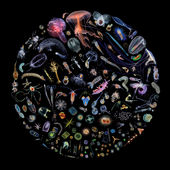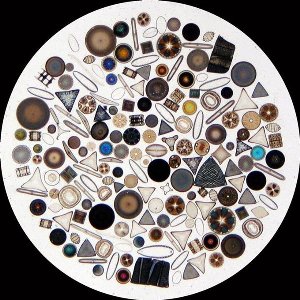File:All species day with homo sapien in Santa Fe .jpg: Difference between revisions
Siterunner (talk | contribs) No edit summary |
Siterunner (talk | contribs) No edit summary |
||
| Line 1: | Line 1: | ||
http://www.greenpolicy360.net/w/ | Steve Schmidt, your siterunner | ||
http://www.greenpolicy360.net/w/Tree_of_Life | |||
<big>'''''On All Species Day'''''</big> | |||
''Looking back and looking forward to the challenges of affirming and protecting diversity of life in the midst of the [http://www.greenpolicy360.net/w/Extinction "Sixth Extinction"]'' | |||
''In the city of 'Santa Fe' named in memory of the 'holy faith' of St Francis, the patron saint of animals and ecology'' | |||
http://earthstonestation.com/2012/05/09/all-species-day/ | |||
http://www.greenpolicy360.net/w/All_Species_Day | |||
○ | |||
'''''Biodiversity''''' | |||
[http://www.greenpolicy360.net/w/Tree_of_Life '''''Tree of Life'''''] | |||
○ | |||
https://en.wikipedia.org/wiki/Species | |||
○ | |||
[[File:Biodiversity-by-dreamchaotic.jpg]] | |||
; <big>[http://www.eoearth.org/view/article/156210/''Encyclopedia of Earth'']</big> | |||
''History of the concept'' | |||
''The early Greeks and Romans had a well established set of taxonomic names for species of animals and plants, based upon the macroscopically observable characteristics of organisms, with Aristotle being the chief architect of this codification; even earlier, the Egyptians and Cretans developed basic symbols and names for species important in farming and culture. It was not until the year 1686 when English naturalist John Ray introduced the concept that species were distinguished by inevitably producing the same species, though considerable morphological variation was observed within a species.[1] Carl Linnaeus (1707–1778) formalized the taxonomic rank of species, and developed the two part naming system of binomial nomenclature that survives to current times, with genus and species names in Latin form.'' | |||
○ | |||
'''''Estimation of species numbers''''' | |||
Since most of the planet's species are deemed to be undiscovered, it is exceedingly difficult even to estimate the total number of species on Earth. An 2011 innovative study estimated the total number of species to be about 8.7 million, with around 86 percent of which are presently undiscovered.[2] The following represents a rough approximation of the number of species by taxonomic group, with ranges given for varying estimates of the species total numbers: | |||
Total species: 7,000,000 to 100,000,000 (the lower number reflecting described species and the higher based upon estimates of Earth's species): | |||
Bacteria: 5,000,000 to 10,000,000[3] | |||
Archaea: 20,000 (based upon only marine species) [4] | |||
Eukarya: 1,660,000 | |||
Of the described eukarya species 1,600,000 based on described species, including: | |||
297,326 plants, including: | |||
15,000 mosses | |||
12,000 ferns | |||
1,025 fern allies | |||
980 gymnosperms | |||
258,650 angiosperms | |||
199,350 dicotyledons | |||
59,300 monocotyledons | |||
9,671 red and green algae | |||
2,849 brown algae | |||
100,000 fungi (of an estimated total 1,500,000 other non-animals) including: | |||
25,000 lichens, | |||
16,000 mushrooms | |||
30,000 red, brown and blue-green molds | |||
17,000 conidial fungi | |||
1,260,000 animals, including: | |||
1,203,375 invertebrates: | |||
950,000 insects | |||
81,000 mollusks | |||
50,000 crustaceans | |||
2175 corals | |||
130,200 others | |||
59,811 vertebrates: | |||
29,300 fish | |||
6199 amphibians | |||
8240 reptiles | |||
9956 birds | |||
5416 mammals | |||
○ ○ ○ ○ ○ ○ ○ ○ ○ ○ ○ ○ ○ ○ ○ ○ ○ | |||
<big><big>'''''Endangered'''''</big></big> | |||
'''''Endangered species...''''' | |||
http://www.eoearth.org/view/article/152414/ | |||
○ ○ ○ ○ ○ ○ ○ ○ ○ ○ ○ ○ ○ ○ ○ ○ ○ | |||
[[File:Racing Extinction websiteplankton 2.jpg]] | |||
''Warming Oceans [http://www.greenpolicy360.net/w/File:Phytoplankton.jpg Phytoplankton & Photosynthesis]'' | |||
[[File:Phytoplankton m.jpg|link=http://www.greenpolicy360.net/w/File:Phytoplankton.jpg]] | |||
Revision as of 13:58, 21 August 2016
Steve Schmidt, your siterunner
http://www.greenpolicy360.net/w/Tree_of_Life
On All Species Day
Looking back and looking forward to the challenges of affirming and protecting diversity of life in the midst of the "Sixth Extinction"
In the city of 'Santa Fe' named in memory of the 'holy faith' of St Francis, the patron saint of animals and ecology
http://earthstonestation.com/2012/05/09/all-species-day/
http://www.greenpolicy360.net/w/All_Species_Day
○
Biodiversity
○
https://en.wikipedia.org/wiki/Species
○
History of the concept
The early Greeks and Romans had a well established set of taxonomic names for species of animals and plants, based upon the macroscopically observable characteristics of organisms, with Aristotle being the chief architect of this codification; even earlier, the Egyptians and Cretans developed basic symbols and names for species important in farming and culture. It was not until the year 1686 when English naturalist John Ray introduced the concept that species were distinguished by inevitably producing the same species, though considerable morphological variation was observed within a species.[1] Carl Linnaeus (1707–1778) formalized the taxonomic rank of species, and developed the two part naming system of binomial nomenclature that survives to current times, with genus and species names in Latin form.
○
Estimation of species numbers
Since most of the planet's species are deemed to be undiscovered, it is exceedingly difficult even to estimate the total number of species on Earth. An 2011 innovative study estimated the total number of species to be about 8.7 million, with around 86 percent of which are presently undiscovered.[2] The following represents a rough approximation of the number of species by taxonomic group, with ranges given for varying estimates of the species total numbers:
Total species: 7,000,000 to 100,000,000 (the lower number reflecting described species and the higher based upon estimates of Earth's species):
Bacteria: 5,000,000 to 10,000,000[3]
Archaea: 20,000 (based upon only marine species) [4]
Eukarya: 1,660,000
Of the described eukarya species 1,600,000 based on described species, including:
297,326 plants, including:
15,000 mosses
12,000 ferns
1,025 fern allies
980 gymnosperms
258,650 angiosperms
199,350 dicotyledons
59,300 monocotyledons
9,671 red and green algae
2,849 brown algae
100,000 fungi (of an estimated total 1,500,000 other non-animals) including:
25,000 lichens,
16,000 mushrooms
30,000 red, brown and blue-green molds
17,000 conidial fungi
1,260,000 animals, including:
1,203,375 invertebrates:
950,000 insects
81,000 mollusks
50,000 crustaceans
2175 corals
130,200 others
59,811 vertebrates:
29,300 fish
6199 amphibians
8240 reptiles
9956 birds
5416 mammals
○ ○ ○ ○ ○ ○ ○ ○ ○ ○ ○ ○ ○ ○ ○ ○ ○
Endangered
Endangered species...
http://www.eoearth.org/view/article/152414/
○ ○ ○ ○ ○ ○ ○ ○ ○ ○ ○ ○ ○ ○ ○ ○ ○
Warming Oceans Phytoplankton & Photosynthesis
File history
Click on a date/time to view the file as it appeared at that time.
| Date/Time | Thumbnail | Dimensions | User | Comment | |
|---|---|---|---|---|---|
| current | 12:48, 24 September 2015 |  | 640 × 369 (98 KB) | Siterunner (talk | contribs) | http://www.greenpolicy360.net/w/Tree_of_Life Category:Biodiversity Category:Green Graphics |
You cannot overwrite this file.


